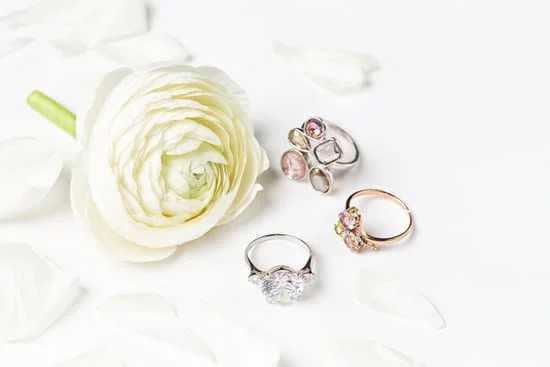Handmade jewelry gold and silver has long been cherished for its timeless beauty and unique craftsmanship. From ancient civilizations to modern-day trends, the art of creating jewelry by hand has captivated people around the world. In this article, we will explore the rich history, intricate craftsmanship, and stunning designs of handmade jewelry in gold and silver.
The tradition of handmade jewelry dates back to ancient civilizations, where skilled artisans meticulously crafted pieces using traditional techniques and tools. Today, this tradition lives on as contemporary artisans continue to create exquisite jewelry by hand, showcasing their creativity and dedication to their craft.
From delicate filigree work to bold contemporary designs, handmade jewelry in gold and silver offers a wide range of styles to suit every taste. Each piece is a testament to the artisan’s skill and imagination, making it a truly unique work of art. Whether it’s a classic heirloom piece or a modern statement accessory, handmade jewelry holds an undeniable allure that mass-produced items simply cannot replicate.
History of Handmade Jewelry
The history of handmade jewelry in gold and silver spans centuries, with its origins dating back to ancient civilizations. Throughout history, these precious metals have been prized for their beauty and durability, making them the perfect medium for creating exquisite adornments. From ancient Egypt to the Byzantine Empire, the tradition of crafting jewelry by hand has been a constant thread in human civilization.
Ancient Origins
Ancient civilizations such as the Egyptians and Greeks were known for their mastery of metalwork and jewelry making. Gold and silver were highly valued for their lustrous shine and malleability, allowing artisans to create intricate designs that symbolized wealth, power, and spiritual significance. The use of techniques such as filigree, granulation, and repoussé showcased the skill and artistry of these early jewelers.
Medieval and Renaissance Period
During the Middle Ages and Renaissance era in Europe, handmade jewelry in gold and silver reached new heights of creativity and complexity. Royal patronage fueled a demand for opulent pieces adorned with gemstones, enamel work, and ornate motifs. Artisans honed their skills through apprenticeships in guild workshops, passing down traditional techniques from one generation to the next.
Modern Revival
In more recent times, there has been a resurgence of interest in handmade jewelry crafted from gold and silver. Artisans draw inspiration from historical designs while incorporating contemporary elements to create unique pieces that appeal to modern sensibilities. This revival reflects a growing appreciation for artisanal craftsmanship and the timeless allure of precious metals as wearable art forms.
As we look back on the rich history of handmade jewelry in gold and silver, it becomes evident that this tradition continues to thrive today, bridging the gap between past traditions and future innovations.
The Craftsmanship Behind Handmade Jewelry
The beauty and uniqueness of handmade jewelry in gold and silver can be attributed to the craftsmanship behind each piece. Artisans who create these stunning pieces use a variety of techniques, materials, and tools to bring their designs to life.
Techniques
There are several techniques that artisans use to create handmade jewelry in gold and silver. One popular technique is soldering, where different components of the jewelry are joined together using heat and a metal alloy. Another technique is forming, which involves shaping the metal into various designs and patterns using hammers, mandrels, and other tools. Additionally, techniques such as etching, engraving, and stone-setting are often used to add intricate details to the final piece.
Materials
Artisans working with gold and silver have access to a wide range of materials to incorporate into their designs. In addition to the precious metals themselves, they may also include gemstones, pearls, enamel, and other decorative elements. Each material is carefully selected for its quality, color, and compatibility with the overall design of the piece.
Tools
The tools used in creating handmade jewelry are as varied as the techniques and materials themselves. Artisans rely on an assortment of hand tools such as pliers, files, saws, and torches to manipulate the metal and assemble the components of the piece. They also use specialized equipment for tasks such as casting metal into specific shapes or creating textures on the surface of the jewelry.
In essence, it is through the skillful application of these techniques, careful selection of materials, and mastery of specialized tools that artisans bring their vision for handmade jewelry in gold and silver to fruition. The craftsmanship involved adds an element of artistry that sets these pieces apart from mass-produced jewelry options.
Unique Designs in Gold and Silver Handmade Jewelry
The art of handmade jewelry in gold and silver encompasses a wide range of designs, from traditional to contemporary. These unique designs are a testament to the creativity and skill of artisans who specialize in crafting jewelry by hand. Whether it’s a classic gold wedding band or a modern silver statement necklace, each piece reflects the individuality and craftsmanship that goes into creating it.
One of the most remarkable aspects of handmade jewelry in gold and silver is the ability to blend traditional motifs with contemporary styles. This fusion allows for the creation of pieces that appeal to a diverse range of tastes, from those who appreciate the timeless elegance of vintage-inspired designs to individuals who seek cutting-edge, avant-garde jewelry.
The versatility of handmade jewelry ensures that there is something for everyone, whether it’s an intricately patterned gold bangle or a sleek silver pendant with clean lines.
Artisans specializing in handmade jewelry often draw inspiration from various cultural and artistic influences, resulting in pieces that carry a rich tapestry of traditions and innovations. Moreover, incorporating gemstones, pearls, or other natural materials adds another layer of uniqueness to these creations. By combining precious metals with exquisite stones or unconventional materials, artisans can produce one-of-a-kind pieces that resonate with discerning customers who value originality and artistic expression.
In today’s market, the demand for handmade jewelry in gold and silver continues to grow as consumers increasingly prioritize authenticity and uniqueness. The allure of owning a handcrafted piece lies not only in its aesthetic appeal but also in its exclusivity.
Furthermore, as consumers become more conscious about sustainability and ethical consumption, there is a growing appreciation for the artisanal processes involved in creating handmade jewelry. Artisans’ sustainable practices often involve using recycled metals and ethically sourced materials, contributing to the overall appeal and value of their creations.
| Aspect | Detail |
|---|---|
| Handmade Jewelry Styles | Traditional, contemporary, fusion designs |
| Inspiration Sources | Cultural influences, artistic movements |
| Sustainable Practices | Use of recycled metals and ethically sourced materials |
The Value of Handmade Jewelry
When it comes to artistry, handmade jewelry in gold and silver stands out for its intricate designs and attention to detail. From delicate filigree work to bold statement pieces, artisans create jewelry that showcases their expertise and artistic vision. Each piece tells a story, whether it’s inspired by nature, culture, or personal experiences, making it a meaningful addition to any collection.
In terms of quality, handmade jewelry in gold and silver is unmatched. Artisans carefully select the finest materials and use traditional techniques to ensure durable and long-lasting pieces. This results in jewelry that not only looks stunning but also withstands the test of time. Customers can be confident in the craftsmanship behind every piece they purchase.
Furthermore, sustainability is a key aspect of handmade jewelry production. Artisans often use ethically sourced materials and environmentally friendly practices to create their pieces. By supporting these artisans, consumers contribute to a more sustainable and responsible industry.
| Aspect | Description |
|---|---|
| Artistry | Intricate designs and attention to detail showcase artisan expertise. |
| Quality | Fine materials and traditional techniques result in durable pieces with longevity. |
| Sustainability | Ethically sourced materials and environmentally friendly practices support a more sustainable industry. |
Buying Handmade Jewelry
When it comes to purchasing handmade jewelry, there are a few tips to keep in mind to ensure that you find the perfect piece. Whether you’re looking for a unique statement necklace, a delicate bracelet, or a pair of elegant earrings, these guidelines can help you navigate the world of handmade jewelry and make an informed decision.
Here are some tips for finding the perfect handmade jewelry piece:
- Research the Artisan: Take the time to learn about the artisan who created the piece. Look for information about their background, experience, and any special techniques they use. Understanding the artist’s story and creative process can give you a deeper appreciation for their work.
- Consider the Materials: Handmade jewelry often showcases unique materials, whether it’s ethically sourced gemstones, recycled metals, or sustainable alternatives. Pay attention to the materials used in the piece and consider how they align with your values and preferences.
- Seek Out Uniqueness: One of the appeals of handmade jewelry is its individuality. Look for pieces that stand out from mass-produced items and embody personal expression and creativity. Embrace imperfections and celebrate the distinctiveness of each handmade piece.
When searching for that perfect handmade jewelry item made from gold and silver, remember to research the artisan, consider the materials used, and seek out uniqueness in design. By following these tips, you can find a one-of-a-kind piece that resonates with your style and values.
Caring for Handmade Jewelry
Handmade jewelry in gold and silver is a timeless investment that can last for generations with proper care and maintenance. Whether you have a handmade gold ring or a unique silver necklace, it’s essential to know how to keep these precious pieces looking their best. Here are some tips for maintaining and cleaning your handmade jewelry:
- Storage: Store your gold and silver jewelry in separate compartments or cloth pouches to prevent scratching and tangling. Avoid storing them in humid areas to prevent tarnishing.
- Cleaning: Use a soft, non-abrasive cloth to gently clean your gold and silver pieces after each wear. For more thorough cleaning, mix a small amount of mild dish soap with warm water and gently scrub the jewelry with a soft-bristled brush. Rinse with clean water and pat dry with a soft cloth.
- Polishing: To maintain the shine of your handmade jewelry, use a polishing cloth specifically designed for gold and silver. Avoid using harsh chemicals or abrasive materials that can damage the metal.
Proper care and maintenance not only preserve the beauty of your handmade gold and silver jewelry but also extend its lifespan. By following these simple tips, you can enjoy your precious pieces for years to come.
Remember that while caring for your handmade jewelry is crucial, professional cleaning and maintenance by a skilled artisan may be necessary from time to time, especially for intricate designs or pieces with gemstones. Investing in the upkeep of your beloved handmade jewelry will ensure that it remains as stunning as the day you acquired it.
The Future of Handmade Jewelry
As the demand for unique and personalized accessories continues to grow, the future of handmade jewelry in gold and silver looks promising. Artisans and jewelry designers are constantly innovating to bring new trends and perspectives to this timeless craft. From incorporating sustainable materials to embracing technology, the evolving landscape of handmade jewelry offers a glimpse into what the future holds.
One emerging trend in handmade jewelry is the use of alternative materials alongside gold and silver. Artisans are exploring eco-friendly options such as recycled metals, ethically sourced gemstones, and sustainable beads to create pieces that not only look beautiful but also align with environmental values. This shift towards sustainability reflects a growing awareness among consumers about the impact of their purchases, making it an important factor in shaping the future of handmade jewelry.
Another exciting development is the fusion of traditional craftsmanship with modern technology. Advanced techniques such as 3D printing and laser cutting are being integrated into the creation process, allowing artisans to push the boundaries of design and produce intricate patterns that were once difficult to achieve by hand alone. This blending of old-world artistry with futuristic technology sets the stage for a new wave of creativity in handmade jewelry.
Lastly, artisan perspectives play a crucial role in shaping the future of handmade jewelry. As consumers seek deeper connections with their purchases, there is a growing appreciation for the stories behind each piece of jewelry.
Artisans are leveraging this interest by sharing their inspirations, cultural influences, and personal journeys, adding depth and meaning to their creations. By understanding the human touch that goes into each handmade piece, customers can develop a stronger connection to their jewelry, further enhancing its value and significance.
Conclusion
In conclusion, the art of handmade jewelry in gold and silver is one that has stood the test of time, from ancient civilizations to modern trends. The craftsmanship behind handmade jewelry involves intricate techniques, quality materials, and specialized tools that result in unique and stunning designs. The value of handmade jewelry lies not only in its artistry and quality but also in its sustainability as a timeless piece of adornment.
When considering purchasing handmade jewelry in gold and silver, it’s important to take into account tips for finding the perfect piece, such as understanding the artisan’s process, seeking out reputable sellers, and choosing a design that resonates with your personal style. Caring for these pieces also requires special attention and maintenance to ensure they retain their luster and beauty for years to come.
As we look towards the future of handmade jewelry, emerging trends continue to showcase the innovation and creativity of artisans who combine traditional craftsmanship with contemporary designs. The timeless beauty of handmade jewelry in gold and silver is a testament to the enduring appeal of this art form, which will continue to be cherished by generations to come.
Whether as a symbol of love, an expression of personal style, or an investment in ethically sourced adornment, handmade jewelry holds a special place in our hearts.
Frequently Asked Questions
Can You Wear Gold Necklace With Silver Rings?
Yes, you can definitely wear a gold necklace with silver rings. Mixing metals has become a popular trend in fashion, and it’s all about personal style and preference. The key is to make sure the overall look is cohesive and balanced.
Is Handmade Jewelry Worth More?
Handmade jewelry can be worth more than mass-produced pieces due to the craftsmanship, unique designs, and quality materials used. Many people appreciate the artistry and individuality of handmade jewelry, making it valuable in both sentimental and monetary terms.
Is It Fashionable to Mix Gold and Silver?
Mixing gold and silver jewelry is considered quite fashionable these days. It adds an interesting contrast and dimension to your overall look. Just be mindful of balancing the two metals harmoniously for a stylish and elegant appearance.

Welcome to my jewelry blog! My name is Sarah and I am the owner of this blog.
I love making jewelry and sharing my creations with others.
So whether you’re someone who loves wearing jewelry yourself or simply enjoys learning about it, be sure to check out my blog for insightful posts on everything related to this exciting topic!





